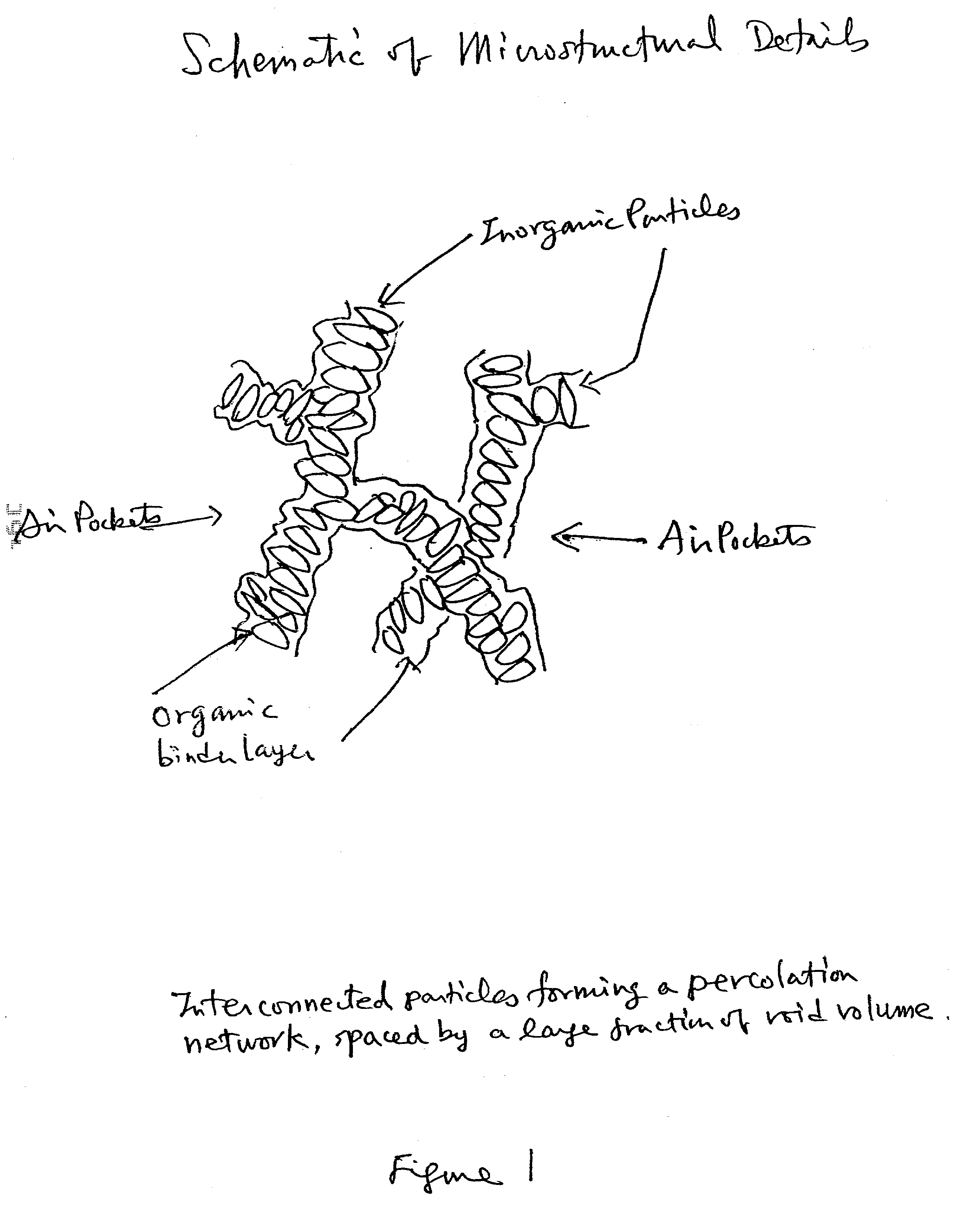Construction board materials with engineered microstructures
- Summary
- Abstract
- Description
- Claims
- Application Information
AI Technical Summary
Benefits of technology
Problems solved by technology
Method used
Image
Examples
example 1
[0024] Finely ground and calcined gypsum is mixed with water, hydrogenated polybutadiene terminated with hydroxyl groups, low molecular weight polyacrylic acid (less than 250,000), emulsifying agent (WetAid), and cyclohexane, and sodium hypophosphite. Optionally, digested paper fibers from recycled sources may be added to the mixture. The fully mixed slurry is heated in an extruder to 350.degree. F. (transit time approximately 1 minute) and discharged into the feed zone of two parallel calender rollers set at 1 / 2" gap. Output from the calender is picked up by two sheets of continuous paper, sandwiching the foamed core.
example 2
[0025] To a Portland cement mix is added the following: maleic acid-substituted styrene-butadiene-styrene block copolymer of roughly 50:50 composition (styrene vs. butadiene), ethoxylated trimethalolpropane triacrylate, AlBN (a thermal initiator), methyl ethyl ketone, AOT, water, and sodium bicarbonate. The thoroughly mixed blend is fed through a heating tube under pressure. The outlet is fitted with a multi-orifice nozzle whereby the expanded slurry is broken into small drops (.about.10.about.100 microns), which continue to expand and solidify. The foamed granule is further mixed with a hot melt adhesive and injected into a preformed door cavity for reinforcement and sound / heat / cold insulation as well as fire / flame retardancy.
example 3
[0026] Calcined gypsum is mixed with antimony oxides in the presence of water. Carboxymethylcellulose and polyacrylic acid (alternatively DMDHEU, dimethyloldihydoxyethyleneurea) are added and the pH is adjusted to the range of 4 to 5.10% by weight of pre-expanded Expanel is introduced into the system. The mixture is fed from the mixing tank directly to a holding tank whereby a porous felt web picks up a large amount of the slurry per pass. A pad roller setup heats the loaded felt, causing expansion and curing of the slurry. The felt pad is then bonded to paper sheets in a continuous operation.
PUM
| Property | Measurement | Unit |
|---|---|---|
| Hydrophobicity | aaaaa | aaaaa |
Abstract
Description
Claims
Application Information
 Login to View More
Login to View More - R&D
- Intellectual Property
- Life Sciences
- Materials
- Tech Scout
- Unparalleled Data Quality
- Higher Quality Content
- 60% Fewer Hallucinations
Browse by: Latest US Patents, China's latest patents, Technical Efficacy Thesaurus, Application Domain, Technology Topic, Popular Technical Reports.
© 2025 PatSnap. All rights reserved.Legal|Privacy policy|Modern Slavery Act Transparency Statement|Sitemap|About US| Contact US: help@patsnap.com

